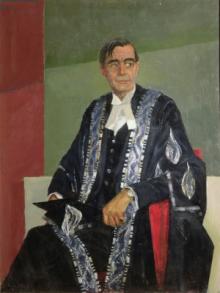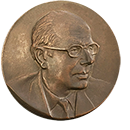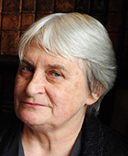Robert Goodden RDI
Jointly awarded with Richard Guyatt
Originally wanting to be a painter, Robert York Goodden was persuaded early in his career that architecture would provide a steadier path of employment. It was not until the end of his training at the Architectural Association, that he got his debut as a Silversmith winning a competition to design a trophy for the Architects' Golf Society.
In the 1930s, the dearth of possibilities in architecture led Goodden into the profession that was only just beginning to be defined as industrial design. During this period he designed a remarkable range of mass-produced goods, including his own range of wallpapers called Asterisk, as well as glassware for Chance Brothers.
In wartime Goodden worked in camouflage, his speciality being the sea-going camouflage of Royal Navy ships and vessels. His largest commission was for the heavy cruiser HMS Berwick, a sister ship of HMS Belfast.
Robert Goodden was a key figure in the resurgence of British design in the period after the Second World War. In 1946 Goodden was at work on Britain Can Make It, the first large-scale peacetime design exhibition, held at the V&A. His role was even more crucial at the 1951 Festival of Britain, where alongside Richard Guyatt and Dick Russell, he designed the Lion & Unicorn Pavilion.
At the forefront of the postwar “homes for the people” movement, Goodden was a member of the Utility Furniture Committee, chaired by Gordon Russell, and then joined Gordon's brother RD Russell in architectural partnership in London.
As professor of silversmithing and jewellery at the Royal College of Art (RCA) from 1948 to 1974, Gooden nurtured a whole new tradition of metalwork design. Goodden was appointed to the RCA by his old friend Robin Darwin in 1948. This was a period of radical restructuring with the aim of training design students to revitalise British manufacturing industry.





